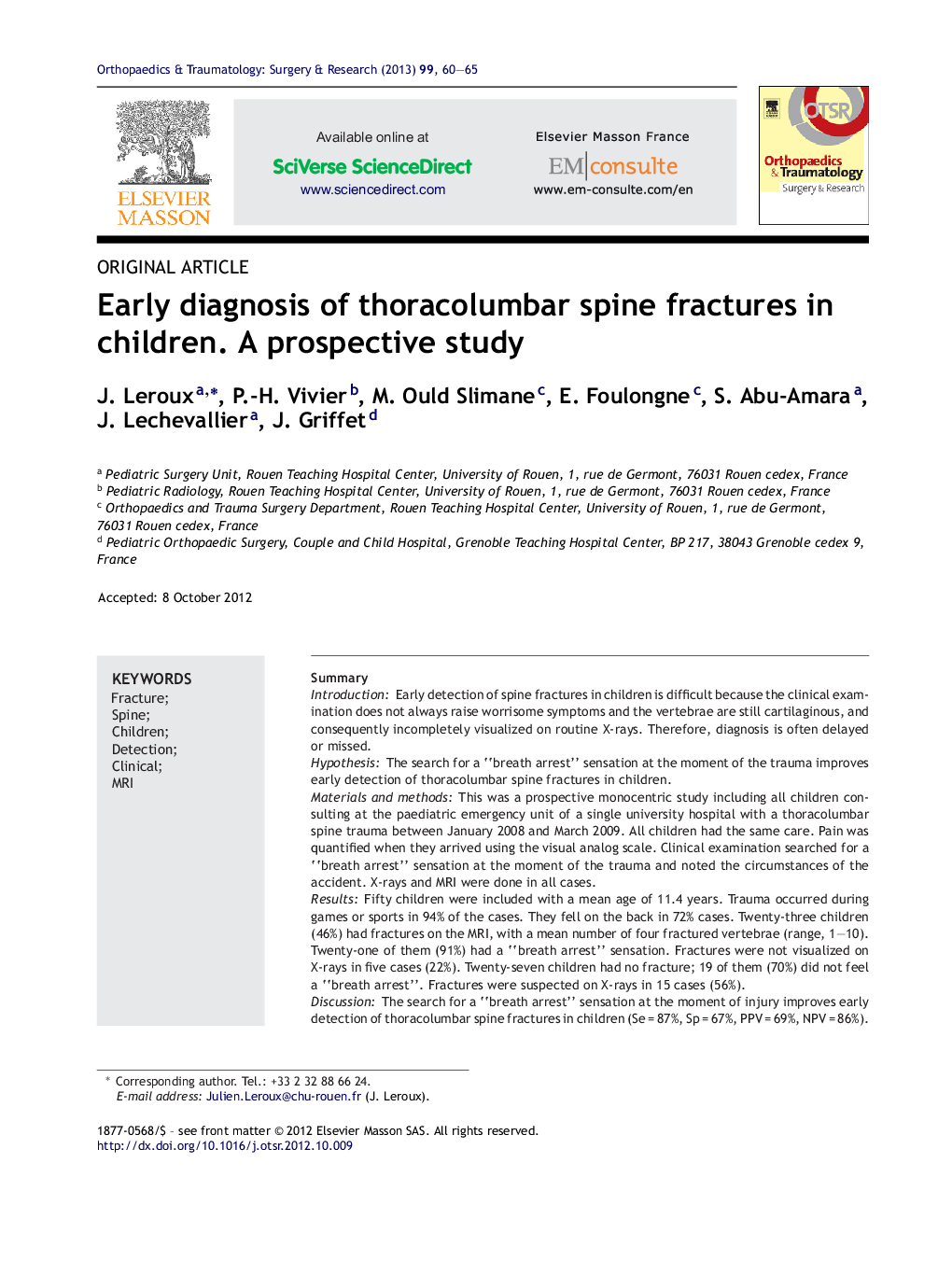| کد مقاله | کد نشریه | سال انتشار | مقاله انگلیسی | نسخه تمام متن |
|---|---|---|---|---|
| 4081933 | 1267615 | 2013 | 6 صفحه PDF | دانلود رایگان |

SummaryIntroductionEarly detection of spine fractures in children is difficult because the clinical examination does not always raise worrisome symptoms and the vertebrae are still cartilaginous, and consequently incompletely visualized on routine X-rays. Therefore, diagnosis is often delayed or missed.HypothesisThe search for a “breath arrest” sensation at the moment of the trauma improves early detection of thoracolumbar spine fractures in children.Materials and methodsThis was a prospective monocentric study including all children consulting at the paediatric emergency unit of a single university hospital with a thoracolumbar spine trauma between January 2008 and March 2009. All children had the same care. Pain was quantified when they arrived using the visual analog scale. Clinical examination searched for a “breath arrest” sensation at the moment of the trauma and noted the circumstances of the accident. X-rays and MRI were done in all cases.ResultsFifty children were included with a mean age of 11.4 years. Trauma occurred during games or sports in 94% of the cases. They fell on the back in 72% cases. Twenty-three children (46%) had fractures on the MRI, with a mean number of four fractured vertebrae (range, 1–10). Twenty-one of them (91%) had a “breath arrest” sensation. Fractures were not visualized on X-rays in five cases (22%). Twenty-seven children had no fracture; 19 of them (70%) did not feel a “breath arrest”. Fractures were suspected on X-rays in 15 cases (56%).DiscussionThe search for a “breath arrest” sensation at the moment of injury improves early detection of thoracolumbar spine fractures in children (Se = 87%, Sp = 67%, PPV = 69%, NPV = 86%). When no fracture is apparent on X-rays and no “breath arrest” sensation is expressed by the child, the clinician can be sure there is no fracture (Se = 26%, Sp = 100%, PPV = 100%, NPV = 53%).Level of evidenceLevel III.
Journal: Orthopaedics & Traumatology: Surgery & Research - Volume 99, Issue 1, February 2013, Pages 60–65